#irish polytheism
Text
Unpopular Opinion Time
The doodle you make or the picrew you use, the poorly executed poetry or basic bare bones prayer will ALWAYS be better than AI generated offerings.
I am sick of having my feed flooded with practitioners, pagans and other polytheists using AI. Specifically deities like Brigid should never be offered AI in my opinion, it’s essentially a slap in the face.
AI generated spells aren’t shit, it’s what a computer assumes will work based off of what it can gather from internet trends and research. MAKE IT YOURSELF, ask a human for help anything but AI.
There is no place for Artificial Intelligence in these spaces.
#keep AI out of witchcraft#keep AI out of paganism#ai is theft#witches against AI#pagans against AI#it is not an accessibility issue either because there are plenty of wonderful other alternatives available instead of AI#witchblr#death witch#folk practitioner#folk witchcraft#pagan#folk magic#folk practice#queer witch#death witchcraft#witchcraft#irish polytheism#Brigid#deity work#baby witch#beginner witch#witchy hot takes#paganblr
89 notes
·
View notes
Text
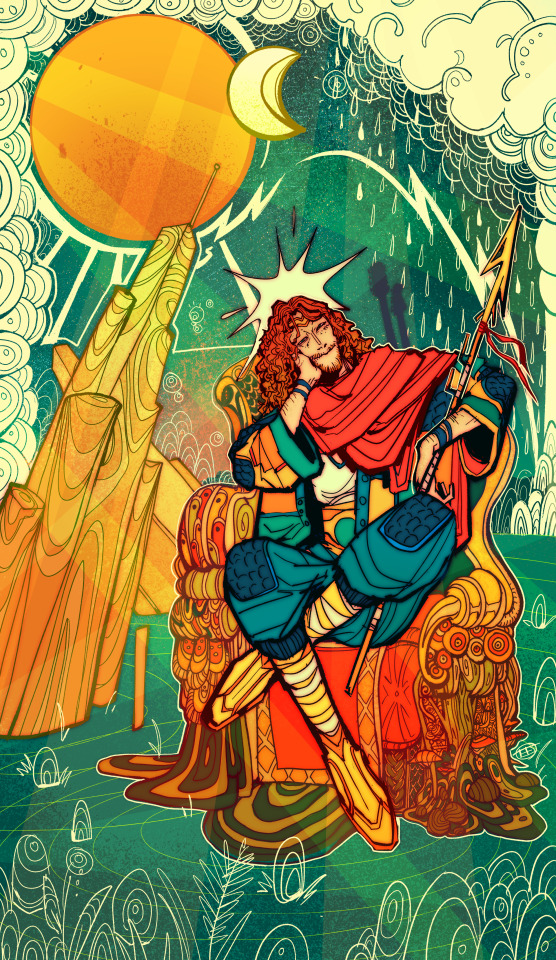
Been wanting to make more work based on Irish paganism and its stories (sort of a blending of jobs hahaha), so I started with an obvious option for me.
Lugh, master of many skills! The "many skills" bit comes in handy for work and an endless sea of special interests, for sure.
#lugh#lugh deity#irish paganism#celtic polytheism#irish polytheism#polytheism#deity work#paganism#illustration#digital art#doodles
535 notes
·
View notes
Text
Important Facts about Samhain from an Irish Celtic Reconstructionist
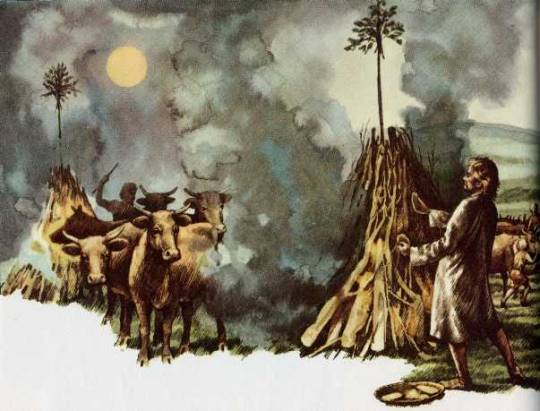
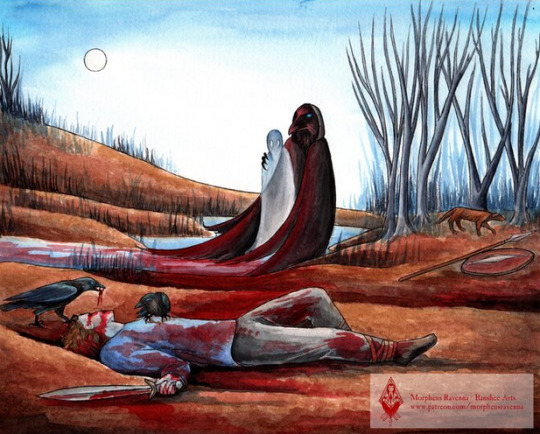

Pronunciation
SOW-in or SOW-een ~NOT~ Sam-han, Sam-win etc.
Dates
Most reconstructionists celebrate Samhain on Oct 31-Nov 1, however some may choose to celebrate on Gregorian Nov 13-14 as this would match the Julian dates of Oct 31-Nov 1. Some also believe that it was a three day festival spanning Oct 31- Nov 2 on which Nov 2 is specifically devoted to ancestral veneration, but there is no specific evidence of this, only possible extrapolation from more modern practices.
Following the Celtic method of days beginning at sunset, regardless of the specific dates you choose to celebrate on your festivities should begin at sunset and end at sunset.
Importance in the Mythos
Ná Morrighan has a strong connection to this time of year thanks to the story of Cath Dédenach Maige Tuired (The Last Battle of Mag Tuired) in which she is found depicted as the ‘Washing Woman’ (sometimes washing herself in the river and other times washing the bloodied armor of the soldiers that would die that day), on the eve of the battle which is also Samhain. The Dagda approaches her and couples with her (creating the ‘Bed of the Couples’ along the bank of river and granting Dagda her blessing in the battle to come). This encounter seems to over emphasize the liminality of the encounter by taking place during the changing of the year and with the couple each standing with ‘one foot on either bank’ of the river.
She and her sisters (Badb and Macha) then use various forms of magic to rain destruction on their enemies (in the form of fire and blood). After the day is won Morrighan speaks a prophecy that describes what is taken by some to be the end of days and others to be the events which will later lead to the Ulster Cycle.
Beneath the peaceful heavens lies the land.
It rests beneath the bowl of the bright sky.
The land lies, itself a dish, a cup of honeyed strength, there, for the taking, offering strength to each
There it lies, the splendour of the land.
The land is like a mead worth the brewing, worth the drinking.
It stores for us the gifts of summer even in winter.
It protects and armours us, a spear upon a shield
Here we can make for ourselves strong places, the fist holding the shield
Here we can build safe places, our spear-bristling enclosures.
This is where we will turn the earth. This is where we will stay.
And here will our children live to the third of three generations
Here there will be a forest point of field fences
The horn counting of many cows
And the encircling of many fields
There will be sheltering trees
So fodderful of beech mast that the trees themselves will be weary with the weight.
In this land will come abundance bringing:
Wealth for our children
Every boy a warrior,
Every watch dog, warrior-fierce
The wood of every tree, spear-worthy
The fire from every stone a molten spear-stream
Every stone a firm foundation
Every field full of cows
Every cow calf-fertile
Our land shall be rich with banks in birdsong
Grey deer before Spring
And fruitful Autumns
The plain shall be thronged from the hills to the shore.
Full and fertile.
And as time runs its sharp and shadowy journey, this shall be true.
This shall be the story of the land and its people
We shall have peace beneath the heavens.
Forever
(based on the translation by Isolde Carmody)
It is also mentioned in Echtra Cormaic that on this festival every seven years the high king would host a feast, it was at this time new laws could be enacted. (but it seems that individual Tuathas or possibly kings of the individual providence may have done this for their territories at Lughnasadh).
It seems to be a time considered especially susceptible to (or of) great change as it is the time which the Tuatha de Danann win victory over the Formorians and take control of Ireland, the invasion of Ulster takes place at this time in Táin bo Cúailnge, in Aislinge Óengusa Óengus and his bride-to-be are changed from bird to human and eventually he claims kingship of Brú na Bóinne at this time of year.
Celebration Traditions
Samhain is the beginning of the “dark half” of the year and is widely regarded as the Insular Celtic equivalent of the New Year. The “dark half” of the year was a time for story telling, in fact in this half of the year after dark is considered the only acceptable time to tell stories from the mythological and Ulster cycle (the Fenian cycle being assumed to be no older than the 12th century based on linguistic dating). Traditionally anything that had not been harvested or gathered by the time of this festival was to be left, as it now belonged to the Fae (in some areas specifically the Púca).
This was also an important time for warding off ill luck in the coming year. Large bonfires would be built and as the cattle were driven back into the community from the pastures they would be walked between these bonfires as a method of purification (the reverse custom of Bealtaine where the livestock were walked between the fires on their way out to the summer pastures). Assumed ritualistic slaughter of some of the herd would follow (though this perhaps had the more practical purpose of thinning the herd before the winter and creating enough food for the feasting). In some areas the ashes from these fires would be worn, thrown or spread as a further way to ward off evil.
Homes would be ritualistically protected from the Aos Sí (Fae or ‘Spirits’) through methods such as offerings of food (generally leaving some of the feasting outside for them), carving turnips with scary faces to warn them off (we now tend to do this with gourds), and smoke cleansing the home (in Scottish saining) traditionally with juniper, but perhaps rowan or birch might be an acceptable alternative. It is likely these would be part of the components used in Samhain bonfires as well, for the same reason.
Lastly based on later traditions as well as links in the mythology this is a time where divination practices or those with the ‘second sight’ were regarded to be especially potent.
Art Credit @morpheus-ravenna
#samhain#irish#irish mythology#irish polytheism#irish paganism#celtic reconstructionism#celtic paganism#celtic polytheism#na morrigna#the morrígan#the dagda#fire festival#blackcrowing#Irish reconstructionist
446 notes
·
View notes
Text
Semi-regular reminder that Gaelic polytheism is not a closed practice. You do not need to be from Ireland, Scotland, or Man or have any “Celtic blood” to worship the Gods, Ancestors, and Spirits
Anyone who tells you different is misinformed at best or probably a racist at worst
185 notes
·
View notes
Text
Something that gets left out in some eclectic discussions of the celtic fire festivals is that they are the end of one season and the start of another
Imbolg- Start of Spring
Bealtaine- Start of Summer
Lúnasa- Start of Autumn
Samhain- Start of Winter
Which makes sense because in Ireland the seasons are generally defined as:
Spring – February, March, April
Summer – May, June, July
Autumn – August, September, October
Winter – November, December, January
Like if you went up to a random person in Ireland today and asked them what season February is in they’d say Spring.
Seasons are obviously different across the world, in fact many places don’t have 4 seasons so the misunderstanding makes sense but seeing people frame Imbolc as “Oh its not a spring festival its the just bringing back of light” is just factually wrong.
#féile#irish paganism#gaelic paganism#celtic paganism#Irish polytheism#gaelic polytheism#celtic polytheism#gaelpol#iripol#witch#I think other places use the solstaces/equinoxes?#this is a weirdly common thing tho#magic#ireland#mine#witchblr
212 notes
·
View notes
Text
Your deities want you to love and value your self
#apollo deity#apollo devotion#aphrodite deity#aphrodite devotion#hermes devotee#hermes devotion#hellenic polytheism#hellenic deities#deity devotion#hellenic pagan#paganism#norse deities#norse paganism#celtic deities#celtic paganism#hellenic paganism#irish polytheism#irish paganism#kemetic polytheism#kemeticism#self love#self worth#self acceptance#deity work#deity worship
978 notes
·
View notes
Text
Our rose bush is in full bloom and Bealtaine/the Floralia is right around the corner and you all know what that means! Time to toss some in a Mason jar with fresh strawberries and wine.
Honestly infusions like this are such an easy way to make a cheap wine feel fancy and I absolutely 100% recommend trying it if you haven't.
#making an effort to use seasonal produce in all my holy day feasts this year#bealtaine#beltane#floralia#irish paganism#irish polytheism#religio romana#roman paganism#queer pagans#queer witch#garden witchery#green witchcraft#kitchen witchcraft#mine#recipe
123 notes
·
View notes
Text
What are some daily rituals you try to do every day? - however short and simple or long and complex they might be. I would love to hear them!
I’m trying to build my own daily and weekly rituals where I set aside time for my deities.. And I’m having trouble figuring out the “best” way to do so. Just looking to see what other’s experiences are like.
#Gaelpol#Polytheism#lokean#brighidine#irish polytheism#gaelic paganism#gaelic polytheism#deity worship#deity work#paganblr#heathenry#Loki#Brighid#loki deity#brighid deity#rituals
38 notes
·
View notes
Text
does anyone have any scholarly book recs to learn about the Irish diaspora in North America? bonus points for a focus on folklore and tradition
#iripol#gaelpol#irish paganism#gaelic polytheism#irish polytheism#much appreciated; i simply havent come across what im looking for yet#outside of smaller sources#scottish diaspora id be interested in too
27 notes
·
View notes
Text
Is it so much to ask for a small coven in my area to perform witchcraft with 😭😭😭
23 notes
·
View notes
Text
Cu Sidhe (faerie hound)
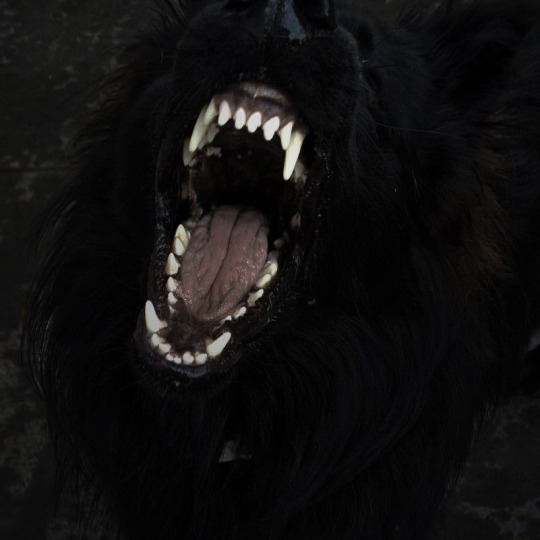
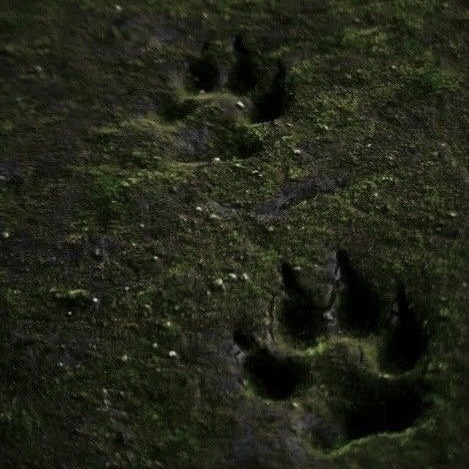
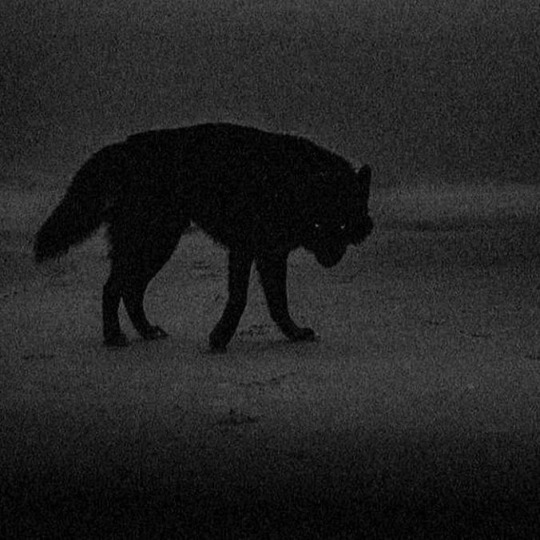
The Black Dogs
In Irish and Scottish folklore, the Cu Sith or Cu Sidhe (faerie hound), is a fearsome black dog with supernatural powers. They are always large- sometimes described as being as big as a calf or a small horse.
The Cu Sidhe are completely silent on the hunt but sometimes they would give three blood curdling howls that could be heard over a great distance. They are said to have the power to appear and disappear at will. In Irish witchcraft its said that there is a certain phrase a Draíodóir could say to call to the dogs to aid them in workings. However, the phrase itself is not given out lightly, making it rarely known.
101 notes
·
View notes
Text
Blackcrowing's Irish Pagan Festivals Master Post
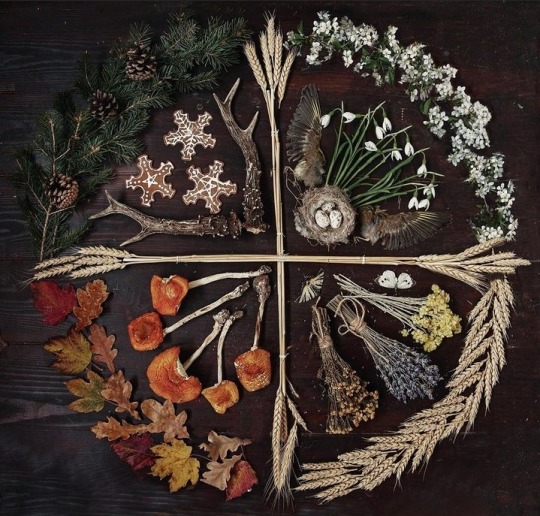
Samhain Festival
Samhain Authentic Foods
Imbolg Festival
Imbolg Authentic Foods
Bealtine Festival
Bealtine Authentic Foods
Lughnasadh Festival
Lughnasadh Authentic Foods
Art Credit - Familiar_flower
#lughnasa#lúnasa#lughnasadh#bealtaine#Baltaine#Beltane#imbolg#imbolc#fire festivals#fire festival#irish#irish mythology#irish polytheist#irish polytheism#irish pagan#irish paganism#irish reconstructionism#irish reconstructionist#celtic#celtic mythology#celtic pagan#celtic paganism#celtic polytheist#celtic polytheism#celtic reconstructionist#celtic reconstructionism#blackcrowing#samhain#pagan#paganism
155 notes
·
View notes
Text
I take a sort of “rule of cool” approach to my pagan faith. I use archaeology and history as my baseline, and I freely incorporate elements from folklore and superstition to fill in the gaps. However, I think there’a an argument to be made that if we want Gaelic paganism to thrive as a living religion, we have to allow innovation and reinterpretation. Do we have any proof of Ogham being used for divination? Nothing concrete. Is it cool and do I still do it tho? Fuck yeah.
As long as you’re honest about what’s historically attested, what is speculative, and what is newly created, I don’t see why old and new can’t coexist. They do in my faith anyway.
Fuck that neo Druid and Celtic shaman shit tho. Get that shit right tf outta here.
#not to shit on strict recons#I admire that approach#gaelpol#gaelic polytheism#gaelic paganism#paganism#irish polytheism#polytheism#this post does not include wiccans and neo druids
36 notes
·
View notes
Note
Forgive me if this is a foolish question, but would you happen to know if there’s any sources out there on historical prayer behaviors? IE body position, gestures, etc. I don’t come from a religious background, so I struggle to know to go about praying even when I know what I want to say
Gestures and actions during Irish/Gaelic Pagan prayer.
This is not a foolish question at all! In fact it is a great one. Honestly finding the right words is the hardest part. There is little in the way of documented proof of how pre christian Gaels prayed so reconstruction is necessary. This makes it tricky to find authentic sources, thankfully there is a few practice's we can reconstruct with a lot of certainty. (Sources in bracketed links)
Clockwise/Deiseal movement
The act of moving in a circle in a clockwise direction (deiseal) is frequently seen to be auspicious and is used in many Irish Christian rituals. Many of these practices are still done today, especially at holy wells or other pilgrimage sites such at the various stations on Croagh Patrick (link). The opposite of this is anti-clockwise or Tuathal is frequently used in curses. This is a recurring theme throughout Irish and Scottish folklore and has been argued to be partially of a pre Christian origin(Link to book containing a chapter on the topic specifically chapter 10)
This is usually done at Holy Wells while doing the rosary. The well itself or an object near it like a statue, rock or tree is encircled by the worshiper usually 3 or 7 times while reciting the rosary. (link)(link)(link). And is a still living practice.
This clockwise movement was also used in medieval rituals, with supposedly in the Book of Fenagh, an inauguration ritual is described where a bell shrine was walked around a king and his solders clockwise. (in book chapter 10).
The use of the word deiseal and its association with blessing led it in the past to be an equivalent to "bless you" after a sneeze. (link). The sunwise or clockwise direction is synonymous with blessings.
Head down, eyes up
The Carmina Gadelica contains a number of prayers from gaelic scotland. Many of which follow a standard christian practice and just as many are situational in nature like to be said while washing ones hands, however certain ones stand out as being representative of a greater traditions of actions due to their unusualness.
References to raising ones eyes (link) and leaving the palms open and outstretched are mentioned (link page 290)
Both women and men were said to curtsey with men doing a bowing motion much like a curtsey in that it involved the bending of the left knee to the side and the right one straight as a show of respect (link)
To summarise with a quote:
"So the lifting of hands, raising of the eyes, and the bowing of the head are all actions that could be done during our prayers. In raising our hands we show a gesture of giving, just as we ‘give’ prayers of thanks, or blessing, or whatever other purpose we might be praying for, especially since there seems to be a since that we’re meant to raise the palms up to the sky (or moon, more to the point) instead of simply holding our hands out, palms up. It’s less a gesture that might suggest we’re asking for a handout than it gives a sense that we’re reaching out."
-An Introduction To Gaelic Polytheism by Marissa Hegarty
Curse pose
While not involved with worship, poets when preforming a satire, often magical in nature were said to stand on one foot, with one eye closed, holding up one hand, and sometimes speaking with one breath. This seems to specifically used for cursing however.
What to incorporate into your pagan practice
I would then recommend that while praying, walking in a circle in a clockwise direction with a bowed head, eyes up, while holding out your hands with the palms skyward would be appropriate. I like to have one hand over the other. After the prayer has concluded a curtsey should be done.
If anyone else has anything to add please do so with what gestures and actions you take during prayers. I hope this answers your question and that it was at all helpful.
#mine#ceist#draíocht#gaelic paganism#celtic paganism#irish paganism#irish polytheism#gaelic polytheism#celtic polytheism#pagan#magic#prayer#paganism#witch#witchblr#research based paganism#please anyone share how you do it#sometimes a direction can be so important to someone that person is me#resources#gaelpol#also check out the two books ive linked#celtic#ireland#scotland#if anyone can source any examples from irish mythology or early lit that would be great#ive seen someone stuff but i can't source it so I did not include#especially deiseal related stuff
85 notes
·
View notes
Text
I realized a few weeks ago that I still had the Irish Pagan School listed on my own resource recommendation list, which hadn't been updated in several years, so that's now fixed.
I recognize the importance of centering native Irish voices in Irish polytheism. However, that doesn't mean supporting a resource that is aggressive, bullying, and uses public shaming, nor which encourages an echo chamber in which those behaviors are actively encouraged and rewarded. The activism that IPS encourages is the kind that's based on guilt-tripping and despair, which isn't sustainable, healthy, or conducive to dismantling anything other than voices which would attempt to contradict it.
Unfortunately, Lora O'Brien has been so influential that many other Morrigan-focused groups have adopted some of her ways. I stopped participating in any online Morrigan groups since before COVID because of this, where bullying is justified as "establishing boundaries" and if you don't like it, it's because you're a "colonizer" and "part of the problem." I'd hoped Jon would help mitigate some of her worst behaviors when they first got together, but except for introducing the Dagda to many people - which is genuinely lovely - that hasn't proven to be the case.
Some of this echo chamber effect has also resulted in some dynamics that I would classify as cultish, although some of it seems to be happening in spaces that she didn't create herself but which have really taken up some of the worst parts of the environment she's fostered. I'm no longer in any IPS groups, so I don't know to what extent this particular dynamic has or hasn't been been directly encouraged.
Anyway, there are other native Irish voices who don't pull this bullshit, and there are plenty of wonderful, native Irish resources with academic studies of Irish lore who aren't tied to shaming and guilting.
73 notes
·
View notes
Text
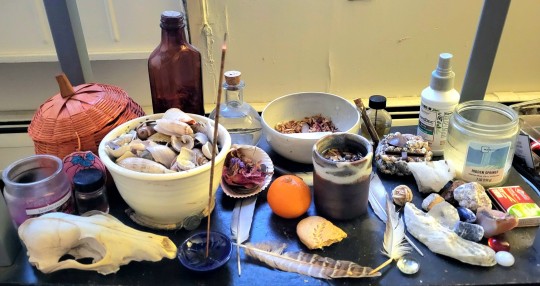
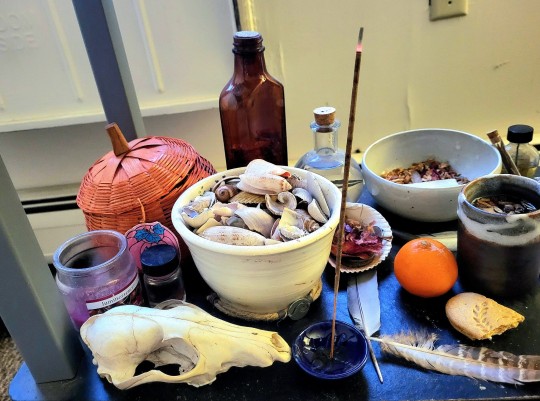
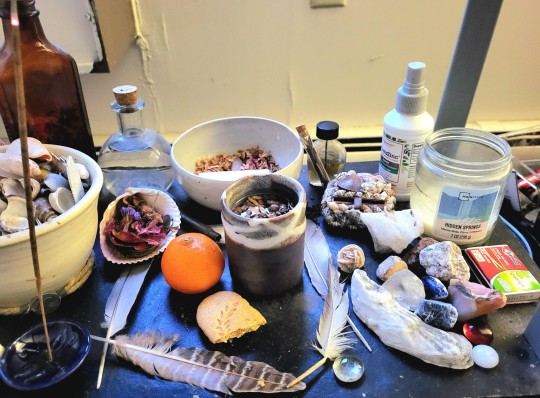
manannán mac lir altar update! there's a cat in the house now, so I had to rearrange the whole shelf, including moving my altar our of her little paw's reach.
19 notes
·
View notes